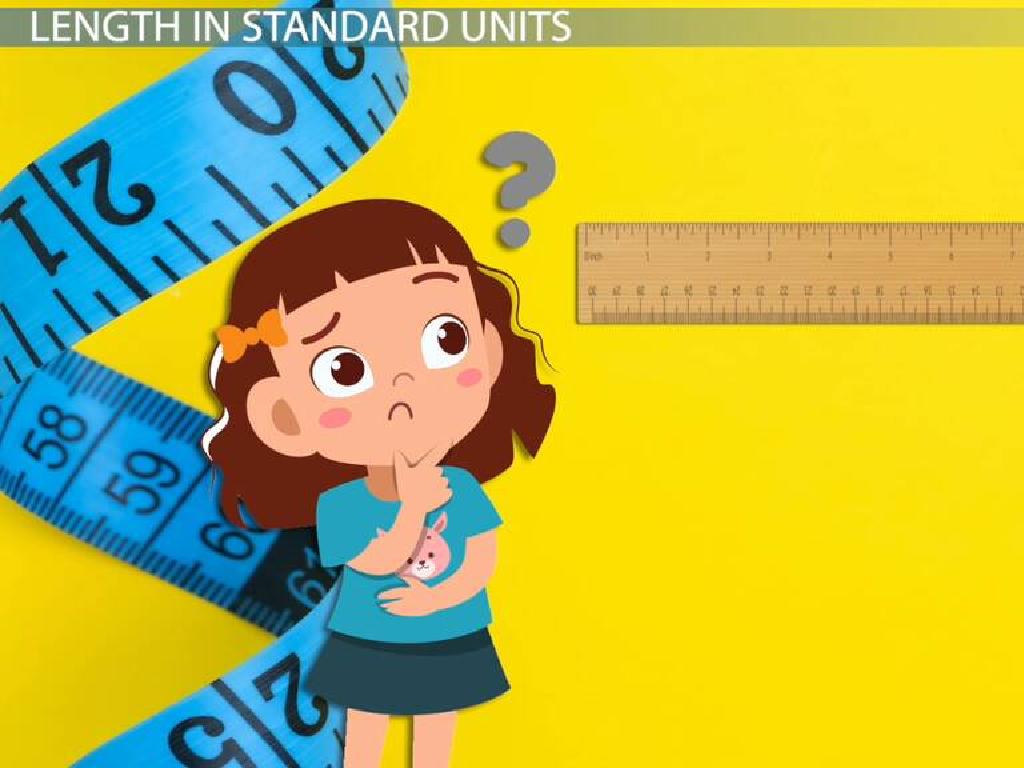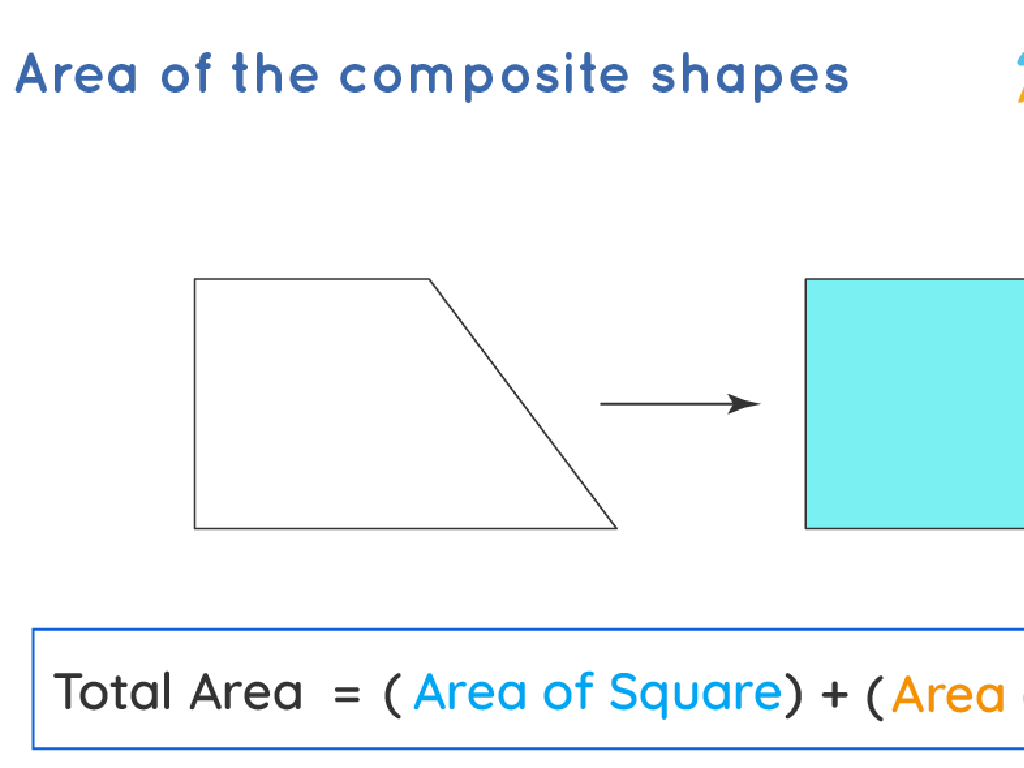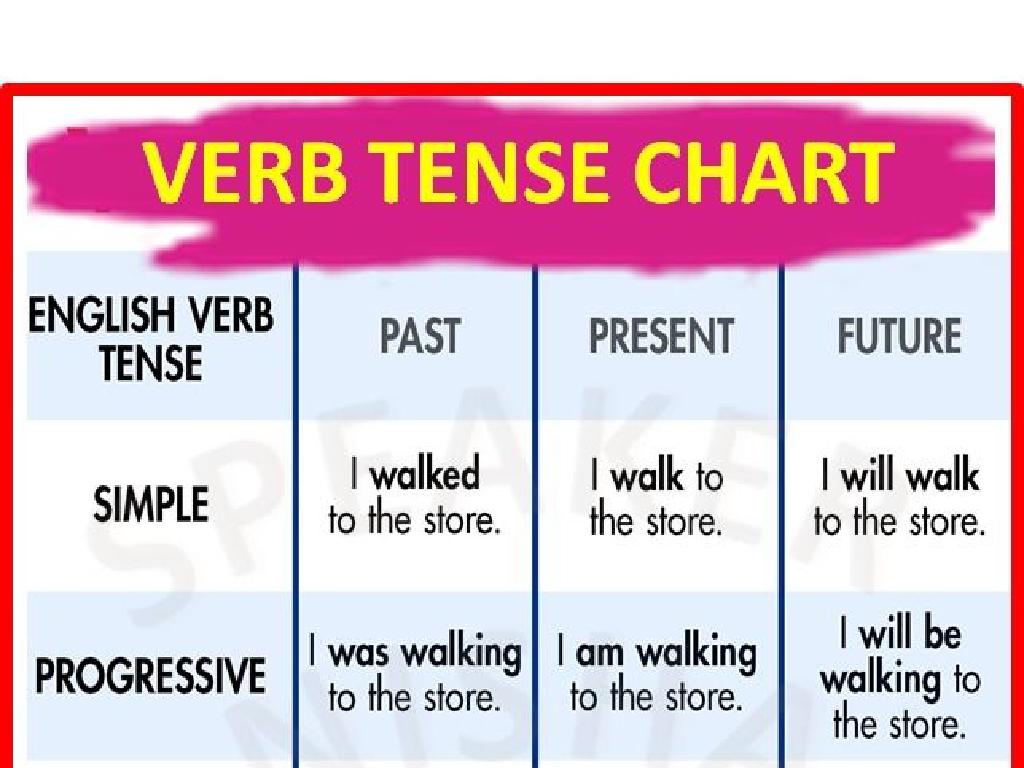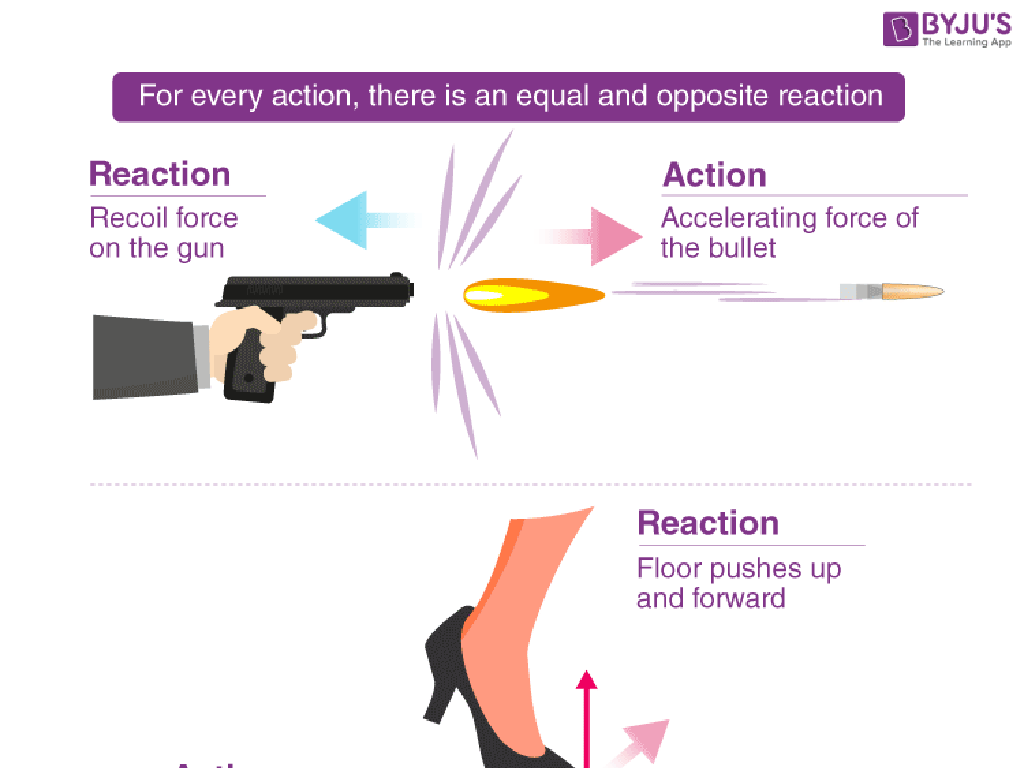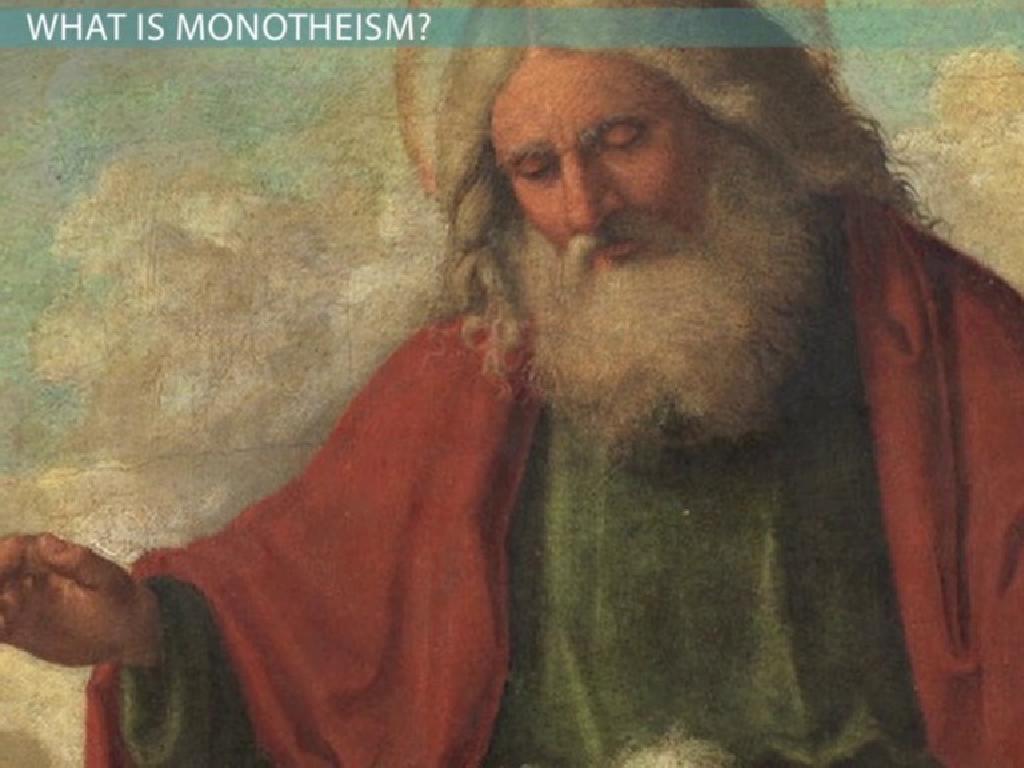Beside And Next To
Subject: Math
Grade: Kindergarten
Topic: Positions
Please LOG IN to download the presentation. Access is available to registered users only.
View More Content
Learning Positions: Beside & Next to
– ‘Beside’ means by the side
– If your friend sits by your side, they are beside you
– ‘Next to’ means very close by
– If you stand very close to a tree, you are next to it
– Examples of ‘Beside’ and ‘Next to’
– A cat beside a box, a book next to a lamp
– Practice finding things ‘Beside’ and ‘Next to’
– We’ll look around to see objects beside and next to each other
|
This slide introduces the concepts of ‘Beside’ and ‘Next to’ to Kindergarten students. Start by explaining that ‘Beside’ means being by the side of something or someone, while ‘Next to’ implies being very close to something or someone. Use classroom objects and illustrations to show examples. For instance, a chair beside a table or a pencil next to a notebook. Encourage the children to find and point out things that are beside and next to other things in the classroom. This will help them understand the spatial relationship between objects. Make the learning interactive and fun by possibly arranging a small activity where students place objects beside and next to each other.
Understanding ‘Beside’ and ‘Next to’
– ‘Beside’ means next to something
– Like a friend sitting by you at lunch
– Examples: Pencil next to notebook
– Imagine your pencil is on the right of your notebook
– A cup beside a plate
– Think of your drink next to your dinner plate
– Practice finding things ‘beside’ others
– Look around the room for more examples
|
This slide introduces the concept of ‘beside’ and ‘next to’ to Kindergarten students. Start by explaining that ‘beside’ means one thing is next to another. Use tangible classroom items for examples, such as a pencil next to a notebook or a cup beside a plate, to illustrate the concept. Encourage the children to think of and share their own examples, perhaps from their experiences like sitting beside a friend. To reinforce learning, engage the students in a fun activity where they identify and point out objects that are beside each other in the classroom.
Exploring ‘Beside’ and ‘Next To’
– ‘Beside’ means next to each other
– Observe ‘beside’ in our classroom
– Look for a book beside a backpack
– Pair up for a ‘beside’ activity
– Place objects beside each other
– Use blocks or toys to practice
|
This slide introduces the concept of ‘beside’ to Kindergarten students through observation and a hands-on class activity. Begin by explaining that ‘beside’ means one thing is next to another. Encourage the children to look around the classroom for examples of items that are beside each other, such as a pencil beside a notebook. For the activity, have students pair up and give them a selection of objects to place beside each other, such as blocks, toys, or classroom supplies. This will help them understand the spatial relationship denoted by ‘beside.’ Provide guidance and ensure each pair has a variety of items to work with. Rotate around the room to assist and ask prompting questions to facilitate learning.
Understanding ‘Next to’ and ‘Beside’
– ‘Next to’ means very close by
– ‘Beside’ is at the side of something
– Examples of ‘Next to’
– A house next to a tree, a chair next to a table
– Let’s find things ‘Beside’ others
– We’ll look around to see objects beside each other
|
This slide introduces the concepts of ‘next to’ and ‘beside’ to Kindergarten students, helping them understand spatial relationships. Start by explaining that ‘next to’ means one thing is very close to another, almost touching. ‘Beside’ also means that one thing is at the side of another. Use tangible examples like a house next to a tree or a chair next to a table to illustrate these concepts. Encourage the students to look around their classroom or home to find and point out objects that are ‘next to’ or ‘beside’ each other. This will help them relate the concept to real-world objects and understand the spatial relationship between them.
Exploring ‘Next to’ in Our Classroom
– Understand ‘next to’ concept
– ‘Next to’ means one thing is beside another
– Find classroom examples
– Draw your toy next to your bed
– Use crayons to draw your toy beside your bed
– Share your drawing with the class
– Tell us why it’s your favorite
|
This slide introduces the concept of ‘next to’ to Kindergarten students through interactive class activities. Begin by explaining that ‘next to’ means one thing is right beside another. Ask the children to look around the classroom and point to objects that are ‘next to’ each other. For the activity, provide paper and crayons and instruct the students to draw a picture of their favorite toy next to their bed. This will help them visualize and understand the concept of ‘next to’. After the drawing, create a sharing time where each student can show their picture and explain why they chose that toy. This activity not only teaches spatial relationships but also allows for creativity and sharing among classmates. Encourage students to use colorful descriptions and practice their speaking skills during the sharing portion of the activity.
Understanding Positions: Beside and Next To
– ‘Beside’ and ‘Next to’ are similar
– Both can mean the same in many cases
– They show where things are
– Like a teddy bear beside/next to a pillow
– Used to describe positions
– We use them to tell the location of objects
– Examples help us learn
– We’ll see how a cat sits beside a box and next to a plant
|
This slide introduces the concept of spatial relationships to Kindergarten students, focusing on the terms ‘beside’ and ‘next to.’ These terms are often used interchangeably to describe the position of one object in relation to another. Use tangible classroom objects to demonstrate these positions, such as a book placed beside a backpack or next to a water bottle. Encourage the students to practice using ‘beside’ and ‘next to’ with classroom items or during playtime to solidify their understanding. Visual examples and physical activities will help these young learners grasp the concept more effectively.
Let’s Play a Game: Simon Says with Positions
– Understand ‘beside’ and ‘next to’
– Simon Says: Follow the directions
– ‘Stand beside your desk’
– Beside means by the side of something
– ‘Sit next to your friend’
– Next to means very close or together with
|
This slide introduces a fun and interactive game of Simon Says to help Kindergarten students understand the concepts of ‘beside’ and ‘next to’. The teacher will use this activity to reinforce the students’ ability to recognize and follow positional directions. The game involves the teacher giving commands such as ‘Stand beside your desk’ and ‘Sit next to your friend’, and the students must only follow the command if it starts with ‘Simon says’. This activity not only teaches positions but also listening skills. The teacher should prepare to demonstrate each position and guide the students through the activity, ensuring that each child has a chance to participate. Possible variations of the game can include using different classroom objects or incorporating other positional words learned in class.
Review and Practice: Beside and Next To
– Review ‘beside’ and ‘next to’
– Place a toy beside a book
– Put your toy on the side of your book
– Place a toy next to a book
– Now, put your toy close to the side of your book
– Discuss what we observed
– How are ‘beside’ and ‘next to’ similar or different?
|
This slide is aimed at reinforcing the concepts of ‘beside’ and ‘next to’ for Kindergarten students. Begin by reviewing the meaning of these terms, ensuring that the children understand that both phrases indicate a close proximity but may be used slightly differently. Encourage the students to physically place an object, like a toy, beside and then next to another object, such as a book, to visualize the concept. After the activity, facilitate a discussion on their observations, guiding them to articulate the similarities and differences between ‘beside’ and ‘next to’. This hands-on activity will help solidify their understanding of positional words through practical application.
Class Activity: Position Scavenger Hunt
– Find items to place beside others
– Find items to place next to others
– Share your findings with the class
– Describe the item and its position
– Discuss the positions used
– Talk about ‘beside’ and ‘next to’
|
This activity is designed to help Kindergarten students understand the concepts of ‘beside’ and ‘next to’ through a fun and interactive scavenger hunt. Teachers should guide the students to find various items in the classroom and then place them beside or next to other items. Once the students have completed the task, they should be encouraged to share their findings with the class, describing the item they chose and how they placed it. This will help reinforce their understanding of positional words. Possible activities include placing a book beside a plant, a pencil next to a notebook, a toy beside a block, or a shoe next to a mat. The teacher should ensure that each student gets a turn and that the activity is conducted in a safe and supervised environment.
Great Job Today: Positions
– Learned ‘beside’ and ‘next to’
– Words describe locations
– Practice with classroom items
– Use your desk items to practice
– Show and tell tomorrow
– Bring your favorite toy to show
|
Today’s lesson was focused on understanding the concepts of ‘beside’ and ‘next to’ to describe the position of objects. Reinforce the lesson by encouraging the children to use these words in sentences to describe where things are in relation to each other. For example, ‘The crayon is beside the notebook.’ or ‘The teddy bear is next to the blocks.’ As homework, ask the students to practice using ‘beside’ and ‘next to’ with items on their desks at home. Prepare for a show and tell activity for the next class where students can bring their favorite toy and describe its position relative to another object. This will help solidify their understanding of these positional words in a fun and interactive way.

